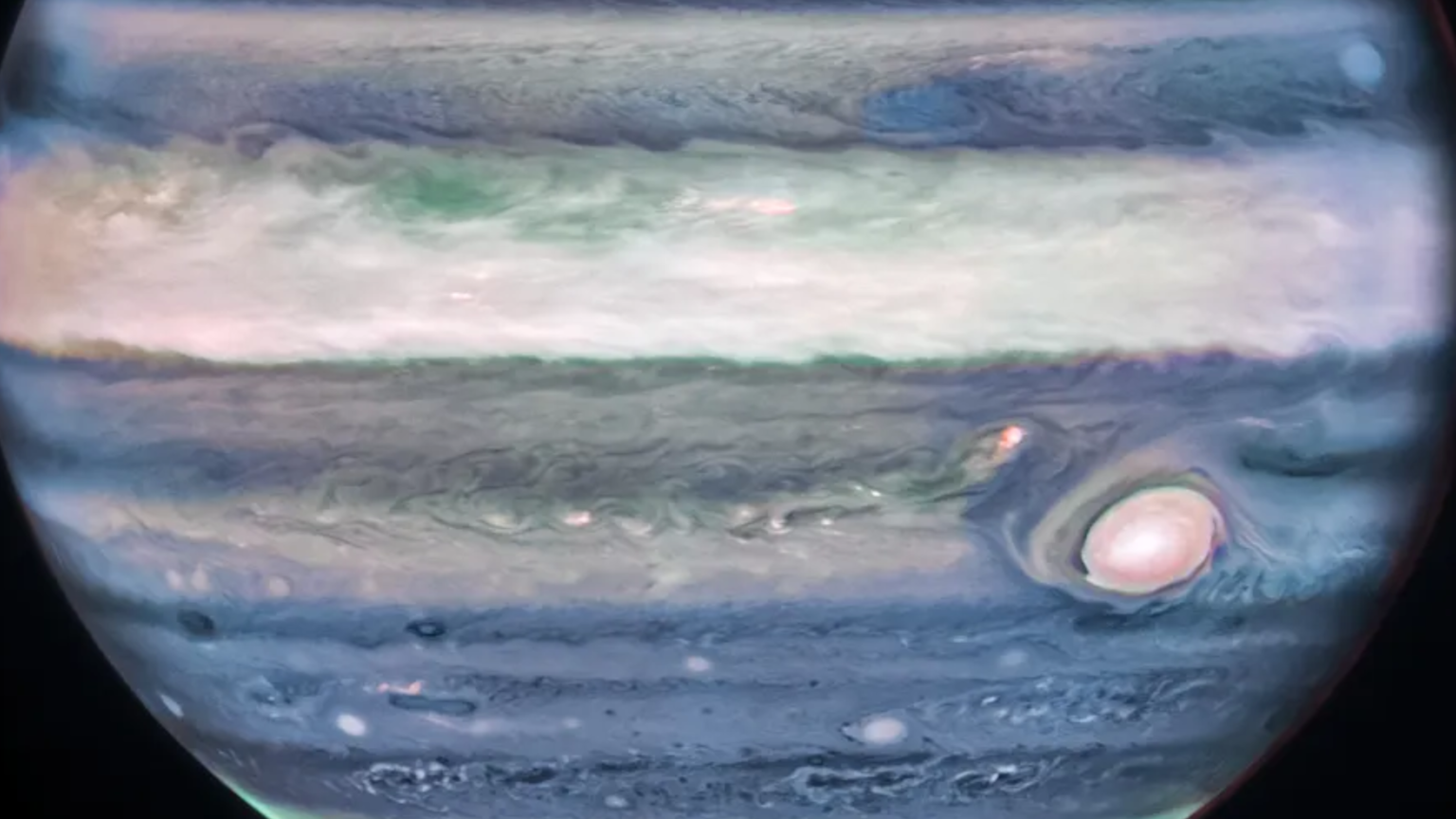James Webb Space Telescope (JWST) gives us images of the cosmos that always show absolute beauty and allure, teasing us with the infinite wonders and uncharted territories of the universe. Even within our own solar system, where things seem familiar, the Space Telescope continues to surprise us with stunning clicks and eye-opening data.
In its most recent discovery, published in the journal Nature Astronomy the James Webb Space Telescope has captured an extraordinary phenomenon on the gas giant Jupiter, revealing a high-speed jet stream above the planet’s equator, surpassing the speeds of Category 5 hurricanes on Earth.
Jupiter’s Racing Jet Stream
The research, led by Ricardo Hueso of the University of the Basque Country, Spain, and his team, utilized data acquired by the James Webb Space Telescope’s Near-Infrared Camera (NIRCam) during observations in July 2022. The experiment was designed to take images of at one Jupiter day intervals, using four different filters, each uniquely and able to observe very specific changes occurring at different altitudes within Jupiter’s atmosphere.
The observations revealed a narrow jet stream with a width of over 4,800 kilometers(3,000 miles), racing at remarkable velocities of about 515 kilometers per hour (320 miles per hour) approximately 40 kilometers (25 miles) above Jupiter’s cloud layer. “This is something that totally surprised us,” said Ricardo Hueso, lead author. “What we have always seen as blurred hazes in Jupiter’s atmosphere now appear as crisp features that we can track along with the planet’s fast rotation.”
Image Credit: NASA, ESA, CSA, STScI, (Nature, 2023)
Jupiter’s atmospheric dynamics have always drawn attention from scientists, due to fascinating phenomena like the planet’s famous Great Red Spot and other colossal storms. This new discovery relating to this jet stream could be key to giving us a better understanding of the winds and temperature patterns that occur within Jupiter’s equatorial stratosphere, which appear to oscillate over years.
Leigh Fletcher from the University of Leicester discussed the potential for the jet’s strength to vary considerably over the next 2 to 4 years, promising exciting prospects for future research. The Team of scientists will continue to observe data to see the evolution and changes in these jet streams over time.
The James Webb Space Telescope : a Look through the Spyglass
The James Webb Space Telescope is often credited to be the pinnacle of human ingenuity in space exploration, as it has been a game-changer when it comes to our understanding of our universe. Launched in December 2021, the JWST has continued to redefine the boundaries of space research, with its mesmerizing pictures of the cosmos as well as unparalleled data. Its ability to capture unprecedented high-resolution images and data across a broad spectrum of wavelengths has opened new avenues for astronomers and planetary scientists, opening up new research windows.
Collaboratively led by NASA, the European Space Agency (ESA), and the Canadian Space Agency, the James Webb Space Telescope represents a testament to international cooperation in the pursuit of unraveling the mysteries of the universe. With advanced technology and marvelous capabilities, the JWST continues to inspire awe with its breathtaking pictures and ignite curiosity, offering a window into the mysterious realm of space.
The unique capabilities of the JWST, particularly its ability to observe higher-altitude atmospheric layers, have been instrumental in this discovery. By comparing the JWST’s findings with data from the Hubble Space Telescope, the research team has gained insights into how wind speeds change with altitude and generate wind shears. Even though ground based telescopes have previously observed planets of our solar system, data from the JWST is still managing to spark unprecedented discoveries into the field.
Michael Wong from the University of California, Berkeley, who led the associated Hubble observations, emphasized the importance of these comparative studies in understanding the timing of the rapid development of storms in Jupiter’s equatorial region.
While Jupiter’s atmospheric complexities have long been studied, the JWST’s infrared vision has now provided us with a deeper understanding of the gas giant’s atmospheric intricacies. As we continue to explore the mysteries of our universe, the James Webb Space Telescope stands as a beacon, shedding light on the enigmas of our cosmic neighborhood.
